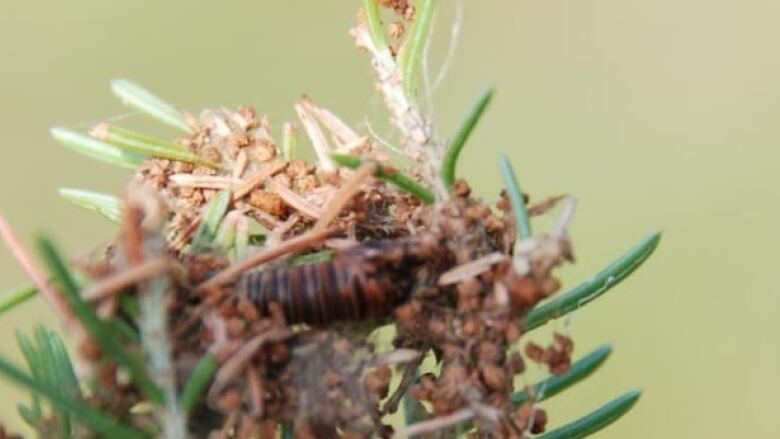Budworm Tracker program recorded 'unheard of' 90 per cent return rate on data
Millions of hectares in Quebec have been destroyed in the current outbreak and the budworm is heading east

The BudwormTracker program, which involved fieldreports from 'citizen scientists,' received an"unheard of"90 per centreturn rate on the data, saysRob Johns, a forest insect ecologist with Canadian Forest Service in Fredericton.
"To put it in perspective, if you can get 20-40 per cent back from a citizen scientist program you're really happy, so we were ecstatic by the response by people involved," he said.
- Budworm Tracker program studies insect's spread
- Spruce budworm infestation may not materialize, scientist says
It's been about 35 years since the sprucebudwormwasa major problem for New Brunswick, but millions of hectares in Quebec have been destroyed in the current outbreak and thebudwormis heading east.
Earlier this year, theBudwormTracker programrecruited 294 members of the public totrap and collect mothsbetween July and August, and estimatehow many were caught in thepheromone traps that were provided.
The $18 million federal projectis tracking the insect insix eastern Canadian provinces and Maine to study where the budworms are migrating, as well as the travel patterns of the moths they become.
About 150 of thetrapswere placed in locations around New Brunswick.
One of the biggest mysteries about sprucebudworm...is the extent to which migration by the moths contributes tothe spread.'-Rob Johns, forest insect ecologist
Speaking toInformation Morning Fredericton,Johns said,"One of the biggest mysteries about spruce budworm outbreaks and how it spreads is the extent to which migration by the moths contributes to the spread.
"Abig part of our program is geared at trying to understand if migrants, coming from areas where there are outbreaks, are flying into other locations and causing populations to beef up," he said.
'Surgical focus'
Scientists are still processing the data, but earlyresults revealed "quite a bit" of migratory activity in the province, Johns said.
And genetic analysis done on the moths that were collected show a number of different subpopulations from areas outside of New Brunswick, possibly fromQuebec.
"But we're not sure where those populations come from," said Johns.
Johns says if problem populations are found early enough, they can be treated on a small scale to keep the budwormnumbers in check.
"If we can identify these embers starting to heat up, we can get in there quickly and rapidly and start pushing those down again," he said.
"It ends up being a more narrow, surgical focus strategy to slow the spread of the outbreak."
Forestry scientists should have a better sense of the budworm's presencein the province in the coming years.
They hope to distribute traps to new locationsto pick up on the insect'smigration into urban areas.
The insect feeds on the needles of balsam fir and spruce trees, often killing large areas of forest.












_(720p).jpg)


 OFFICIAL HD MUSIC VIDEO.jpg)
.jpg)



























































































